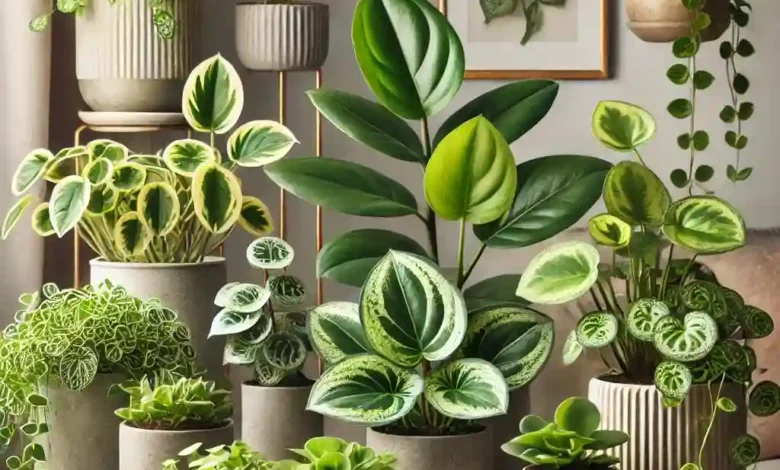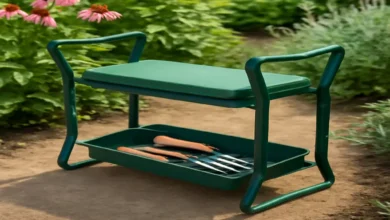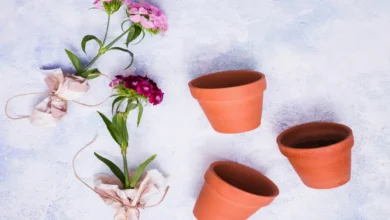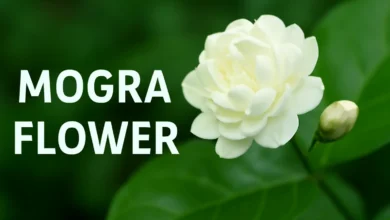Peperomia Varieties: A Guide to Unique and Beautiful Houseplants

Peperomia is an incredibly diverse and intriguing genus of tropical species that is known for its unique foliage, their compact size and ease of care. With more than 1500 species Peperomia species are available in a variety of forms, colors and patterns, making the peperomias a popular choice among home plant lovers. The plants are suitable for both novices and experienced admirers alike, due to their flexibility and easy maintenance needs.
In this post we’ll look at some of the most sought-after Peperomia varieties, their maintenance needs, as well as tips for keeping these plants healthy in your home.
Popular Peperomia Varieties
1. Peperomia Obtusifolia (Baby Rubber Plant)
Peperomia Obtusifolia is one of the most very popular cultivar with large, glossy and smooth green leaves. Sometimes, it is referred to by the name of “baby rubber plant” due because of its similarity to rubber tree. The variety is thriving in indirect, bright light and needs occasional watering which makes it a simple houseplant to care for.
2. Peperomia Caperata (Ripple Peperomia)
The plant is recognized for its deep-textured and ruffled leaves Peperomia Caperata comes in various shades, such as red, green and silver. Its compact habit of growth as well as the striking leaves make it a stunning option for any indoor garden.
3. Peperomia Rosso
Peperomia Rosso is well-known because of its pointed, elongated leaves, with a rich green top, and striking red bottoms. The contrast between these two shades gives the plant a striking and captivating design. It flourishes in sunlight and demands well-drained soil.
4. Peperomia Hope
Peperomia Hope can be described as a slithering species with succulent-like leaves. It is ideal to hang on shelves or hanging baskets in which its vines that cascade down can be placed. It thrives in indirect and bright lighting and occasionally watering.
5. Peperomia Prostrata (String of Turtles)
One of the most unique Peperomia varieties, Peperomia Prostrata features small, turtle-shell-patterned leaves that grow on trailing vines. The plant grows slowly but is very attractive, making it perfect for terrariums and smaller pots.
6. Peperomia Watermelon
It is named for the striking resemblance it has to watermelon, this plant features green, round leaves that have silver stripes which are reminiscent of a rind from a watermelon. It flourishes in light that is bright and indirect and is a good choice for soil that drains well.
7. Peperomia Albovittata (Piccolo Banda)
Peperomia Piccolo Banda can be well-known for its beautiful vein-like marks on the leaves. Its compact growth habits as well as the distinctive patterns are what make it an extremely sought-after selection for plant enthusiasts.
8. Peperomia Verticillata (Red Log)
Peperomia Verticillata features fuzzy green leaves that have a red-colored underside. The plants bushy growth habits and bright colors makes it an impressive houseplant, which thrives in indirect, bright light.
9. Peperomia Graveolens (Ruby Glow)
Peperomia Graveolens has long, curvaceous leaves. They have an emerald top and deeply red bottom. The succulent like plant can withstand drought and likes soil that is well-drained.
10. Peperomia Clusiifolia (Jelly Peperomia)
Jelly Peperomia is one of the vibrant plant with variegated leaves that feature shades of cream, green, and pink shades. This plant is vibrant and adds an element of colour in any indoor area and is a great choice for mild light conditions.
Peperomia Care Tips
1. Light Requirements
Peperomias are fond of bright, indirect light, however they are tolerant of less intense light. Avoid direct sun, because it could burn their leaves.
2. Watering Needs
Many Peperomia cultivars have leaves that resemble succulents which hold water. Therefore, they like to dry little between the waterings. The excess water can cause root mold.
3. Soil and Potting Mix
A well-drained potting mix is crucial to ensure well-being of Peperomia orchids. Mixing peat with perlite as well as orchid bark, is recommended.
4. Humidity and Temperature
Peperomias thrive in normal indoor humidity. They also like the occasional mist. They like temperatures of 65 to 75 degrees (18-24degC).
5. Propagation Methods
Peperomias can easily be propagated by stem or leaf cuttings buried in the soil or water.
FAQs About Peperomia Varieties
1. Do Peperomias simple to take care of?
Yes! Peperomias are easy to maintain and perfect for novices. They require only a little water and can adapt to varying lighting conditions.
2. Do Peperomias require a lot of lighting?
Peperomias prefer bright, indirect light but can tolerate lower light levels. It is best to avoid direct sunlight for the sake of preventing damage to leaf.
3. How often do I need to be able to water my Peperomia?
The soil should be watered after it is dry is the best. A majority Peperomias do not require watering more than at least once every 7-10 days according to the conditions.
4. Do you think that Peperomias be transmitted?
Absolutely, Peperomias are easily propagated with stems or leaf cuttings buried in water or soil.
5. Do Peperomias attract pests?
Peperomias generally resist pests however they may draw mealybugs, spider mites or fungus gnats when they are overwatered.
6. Do Peperomia plants harmful to animals?
No! Peperomia plants are safe for pets and cats, which makes the perfect pet-friendly houseplant.
7. Do Peperomias be grown in the outdoors?
Peperomias grow well indoors, however they is also able to be grown outdoors in shaded, warm locations that receive indirect sun.
Conclusion
Peperomia varieties offer a wide collection of beautiful, simple-care plants that are suitable for indoor area. No matter if you’re looking for trails, bushy or a distinctively patterned plant you’ll find the Peperomia selection to suit your needs. When you adhere to the basics of care they can be lovely plants for long time to be.
Also Read: Clover Lawn



